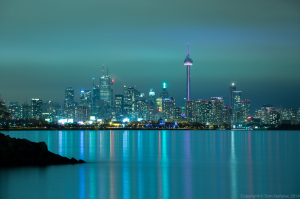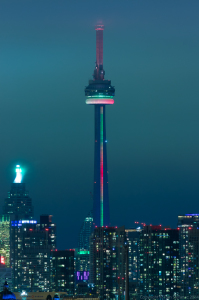I’m not going to get deep into the theory of white balance, but let’s just say that white is what we make it. The short and sweet is that we speak of colour temperature in degrees kelvin based on black body radiation. A metal rod for example at about 2000 degrees kelvin glows a deep orange colour, at about 5000 kelvin it glows white and at around 8000 kelvin it begins to glow more blue. Your white balance basically assumes whatever colour temperature you set it to should be true white. For example to make candle light white you need a white balance of 1800k but cool tungsten is 2800k and hot tungsten is 3200k. Sodium lights are often 4500k and daylight is 5600k. Evening daylight is usually 7500 – 9500k and a traditional blue/purple neon light is 56,000k.
Now to blow your mind, colour does not exist! Colour is not real!!!
You might be wondering what the heck I mean? Well, colour is not a physical property of photons or any electromagnetic radiation. The human brain is clever and it can manufacture colour by assigning what we see as the colour blue to visible light (photons) in the 450–495 nm range and colour red to light in the 620–750 nm range. But here is the catch, we have no idea and no real way of testing to see if we all see colour the same way. For example, what I see as the colour red might actually be blue to someone else because their brain is wired slightly differently. Remember, what we see as colour is a property of hue, not luminosity. So in theory we can change the perceived colour of light by changing the hue in our brains without effecting the luminosity. Scientists have discovered that women see red differently than men and some women actually have a fourth receptor in their eye.
 Our brains assign colour to visible light the same way we assign colours to thermal infrared, near infrared, uv, x-ray and even gamma ray images. Animals that see other parts of the spectrum that the human eye cannot do the same thing, their brains create colour or at the very least shades of gray. It’s natures way to give meaning and make sense of the physical world around us. Think about feeling hot vs cold, you perceive hot and cold very differently yet it’s just a relative speed of atomic vibration and particle motion. Again, your brain and body give meaning to an energy property of matter.
Our brains assign colour to visible light the same way we assign colours to thermal infrared, near infrared, uv, x-ray and even gamma ray images. Animals that see other parts of the spectrum that the human eye cannot do the same thing, their brains create colour or at the very least shades of gray. It’s natures way to give meaning and make sense of the physical world around us. Think about feeling hot vs cold, you perceive hot and cold very differently yet it’s just a relative speed of atomic vibration and particle motion. Again, your brain and body give meaning to an energy property of matter.
So you might be wondering why I’m telling you all this? Well, in short, don’t be afraid to experiment with white balance. The photo of the CN tower to the right was accidentally shot with a white balance of 2200k. I could have corrected it in post, but the beauty of this cold colour temperature is that it allows you to see all the colours in the city which become washed out above 2800k. It’s also not that hard on the eye and even believable because most of the other colours of the buildings and points of light still appear close to the way they actually looked.
